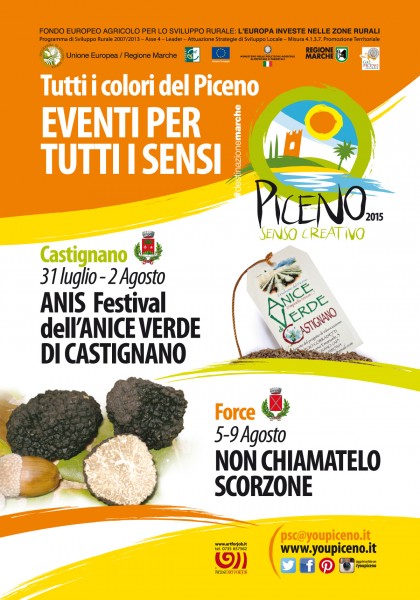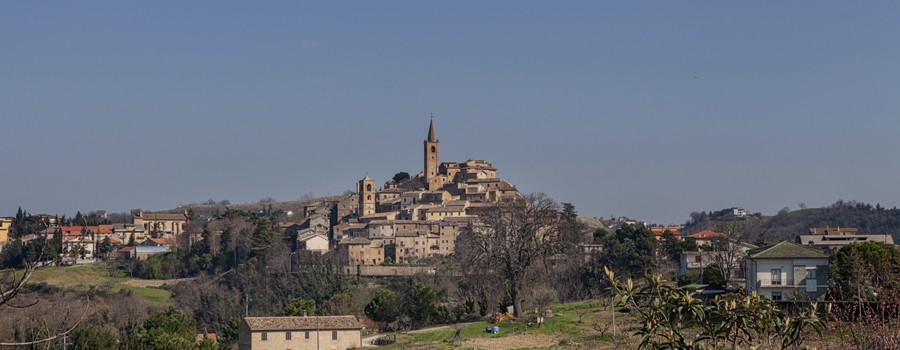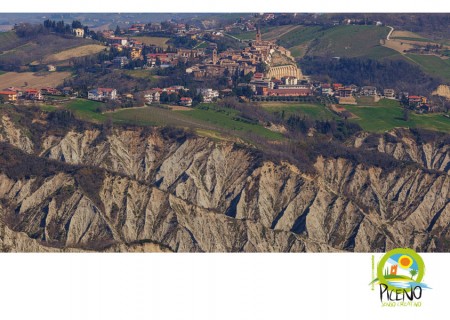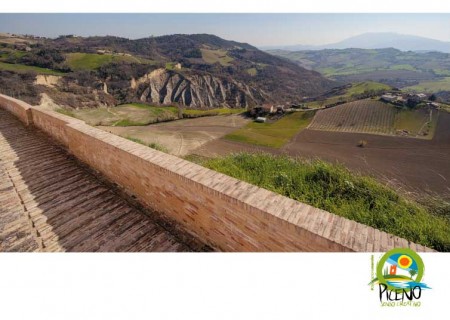 One of the key products in Castignano’s economic and anthropological history is Pimpinella Anisum, as aniseed is called by scholars, found in the charming areas around the town.
One of the key products in Castignano’s economic and anthropological history is Pimpinella Anisum, as aniseed is called by scholars, found in the charming areas around the town.
This delicate, fascinating member of the umbrelliferae family, appreciated for centuries both in the kitchen and in pharmacopeia, arrived from the Middle East and now embellishes the complex landscape of Castignano, a locality that has produced an aniseed much-appreciated for its aromatic qualities.
Indeed, it has become a favourite ingredient, first for mistrà liqueur (a traditional home-made distillate of alcohol and aniseed, other herbs, and fruits), and then for the famous Anisetta Meletti, for decades one of Italy’s most prestigious international icons.
 The subject of meticulous and patient cultivation over recent decades, aniseed has bound its name and its fortune to Castignano, which had already discovered this plant and its virtues to the point of making it the main component of home-made products of great importance for daily life and for health, christening it “Green gold”.
The subject of meticulous and patient cultivation over recent decades, aniseed has bound its name and its fortune to Castignano, which had already discovered this plant and its virtues to the point of making it the main component of home-made products of great importance for daily life and for health, christening it “Green gold”.
And precisely Castignano, after years of extreme neglect, has started promoting aniseed thanks to a quality project supported by several scientific and institutional subjects, aimed at restoring and extending cultivation of Pimpinella Anisum.
Castignano aniseed is a particularly rich variety of anethol, a substance which gives it a distinctive scent, and this is thanks to the local microclimate, with its sunlight and breezes.
Anis, Castignano’s aniseed festival (from 31 July to 2 August), is an event created to raise awareness of the plant with the general public and to help develop its gastronomic use, even aiming to experiment its application to craft beer.






















